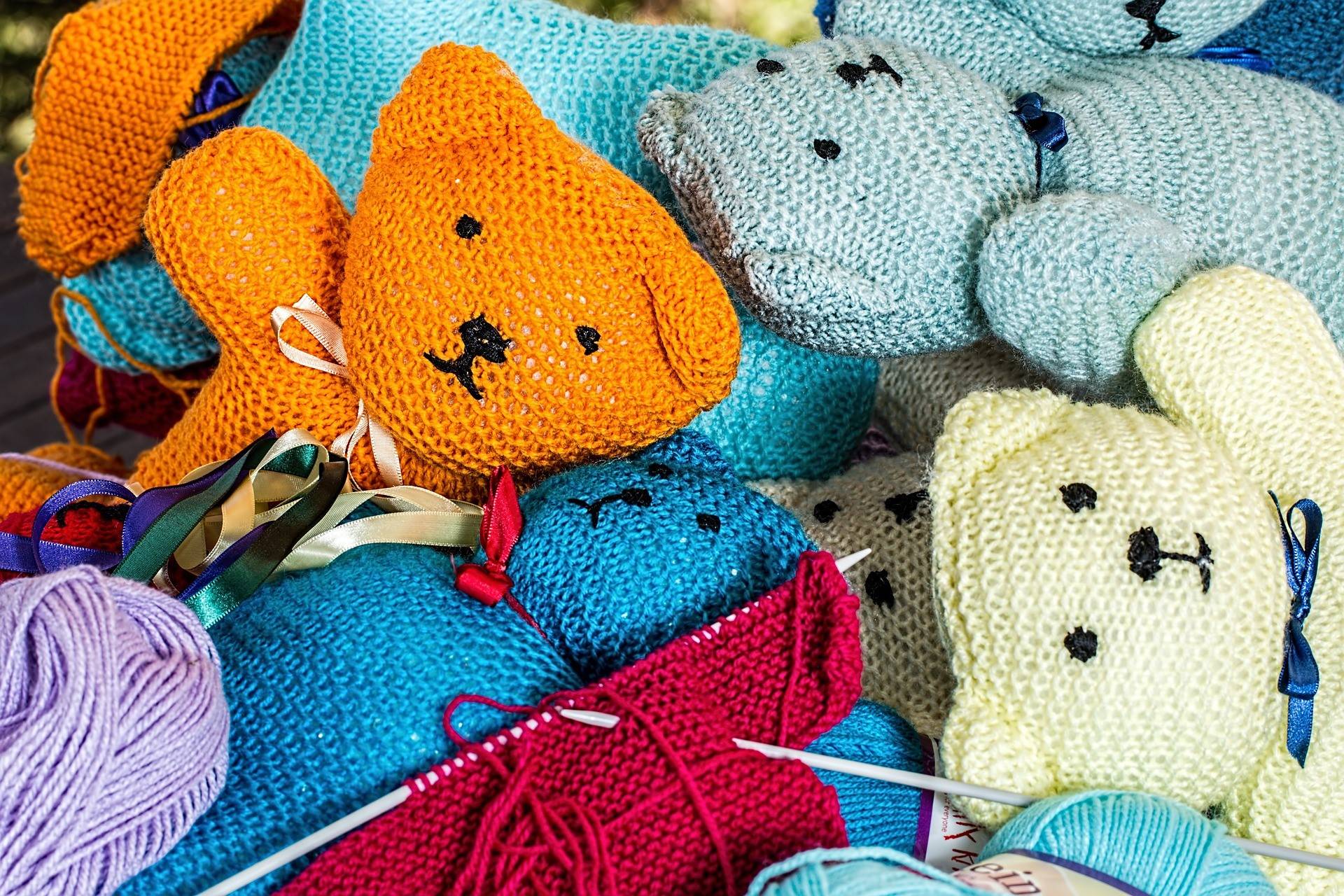Aran vs Worsted Weight Yarn: What’s The Difference?

Source: Stevepb on Pixabay
Choosing the right yarn weight for your knit or crochet project is the first and most important step to creating breathtaking items. But how do you know which yarn weight is best? And what if some of them are so similar that it’s hard to tell them apart? One such pairing is Aran weight and worsted weight yarn. Although they are often used interchangeably, they actually denote different yarns. So, what exactly is the difference between Aran and worsted-weight yarn? Let’s find out.
What Is the Difference Between Aran and Worsted Weight Yarn?
Both Aran and worsted are medium-weight categories of yarn. They are quite similar to each other (so much that many crafters consider them one and the same). However, Aran yarn actually tends to be a little thicker than worsted-weight. For this reason, you may also hear it being referred to as heavy-worsted yarn.
The difference between the two isn’t huge –the recommended needle size for worsted yarn is US 7, while for Aran, it is US8. When it comes to crocheting, worsted-weight yarn requires an I-9 to J-10hook, while Aran requires a J-10 or K-10.5 hook. In fact, many brands don’t even discern between Aran and worsted-weight yarns on their labels.
Can You Substitute Aran for Worsted Weight Yarn?
In general, you can substitute Aran for worsted-weight yarn and vice versa. However, if you plan on doing so, there are some things to keep in mind:
- Hook or Needle Size – You will first likely have to adjust the size of the hook or needles you’re using to match the yarn. If you’re not sure how to do this, refer to the gauge instructions on the pattern.
- Gauge – These two yarns have a slight difference in gauges, too. Since Aran tends to be heavier, it also has a smaller gauge (4st/in, as opposed to 3st/in for worsted). While this may not be a big deal for smaller items, if you’re working on a larger project, such as a blanket, it can make a huge difference.
- Fiber Content – Switching between yarn weights is complicated enough, the last thing you need to add to the mix is different fiber contents. Try to stick to the original fiber when swapping yarns to make things easier for yourself.
What Is Aran Used For?
Aran yarn can be used for a wide variety of projects (depending on the fiber content of the specific yarn), such as cardigans, sweaters, hats, scarves, and similar winter garments, but also baby items such as blankets or baby clothes, and summertime garments such as dresses.
What Is Worsted Yarn Used For?
Since Aran and worsted-weight yarn are quite similar, they are generally used for the same kinds of projects, including warm and cooler garments, winter accessories, baby items, and so on. The best application of worsted yarn will, just like with Aran, depend on the fiber content. Additionally, both worsted and Aran yarns are great for beginners, especially if they’re acrylic since they’re quite easy to handle.
Mary Maxim’s Favorite Worsted and Aran Yarns
We’ve covered the main differences between worsted-weight and Aran yarn. But if you’re looking to work with either, you’ll still need to pick the best yarn for your project. To help you with that choice, we’ve decided to recommend some of our favorite worsted and Aran yarns.
Frequently Asked Questions
Still have some questions regarding Aran yarn? Check out the quick FAQ below for answers.
What Is the Difference Between Aran and Chunky Wool?
There are several differences between Aran and chunky wool yarn. First, there is the question of thickness. Aran, as we have already established, is a medium (or #4) weight yarn. Chunky, on the other hand, refers to thicker yarns (also known as bulky or #5).
Secondly, chunky wool yarn is, well, yarn madeof wool. On the other hand, the term Aran refers only to the thickness of the yarn, not its fiber content. So while chunky wool is always either wool or a wool blend, Aran yarns can be cotton, wool, acrylic, or any other fiber out there.
Are you looking for a quality chunky yarn to try? We recommend Mary Maxim Marvelous Chunky (100% acrylic yarn), Premier Basix Chunky (100% acrylic), or Premier Colorfusion Chunky Yarn (100% acrylic).
What Is the Difference Between Aran and Double Knit?
Just like Aran yarn is a level thinner than chunky yarn, so is double-knit yarn (DK) a level thinner than Aran. In other words, DK yarn belongs in the light (or #3) category. Other than that, there is a difference in the types of projects these two weights are used for. While Aran yarn is better for warm garments such as sweaters or scarves, DK yarn is better for lightweight clothing, baby blankets, and amigurumi projects.
Looking for good double-knit yarns for your next project? We recommend trying out Mary Maxim Prism Yarn (100% acrylic), Premier Anti-Pilling Everyday DK Yarn (100%anti-pilling acrylic), and Circulo Amigurumi Yarn (100% mercerized cotton).
Aran vs. Worsted Weight Yarn: Conclusion
Both Aran and worsted-weight yarn belong to the same weight category of yarns – medium, also known as #4 in the Standard Yarn Weight System. However, they belong to opposite ends of this medium spectrum. While Aran is thicker and closer to bulky yarns (although not quite all the way there), worsted yarn is thinner and closer to lighter yarns. For this reason, many crocheters have dubbed Aran yarn heavy-worsted, and many brands don’t even make a distinction between the two.
Both Aran and worsted-weight yarn are used for similar types of projects and have a wide application. Depending on the fiber content, they can be used to make blankets, winter clothes, summer garments, baby items, accessories, home decor, toys, and so much more.
The two yarns are so similar to each other that experienced crocheters and knitters can easily substitute them for one another (while paying attention to the gauge, tools, and fiber content, of course). For less experienced crafters, it might be a better idea to stick to the yarn weight specified in the pattern.

